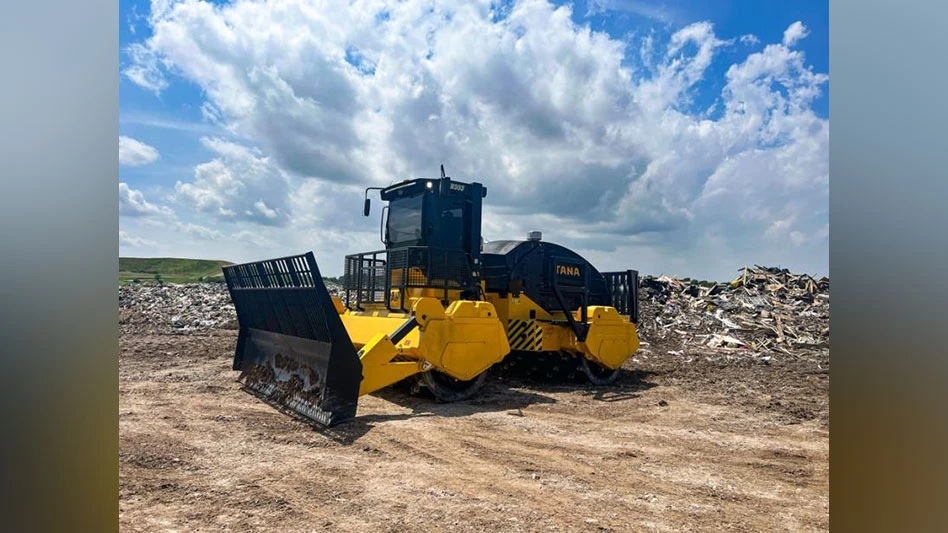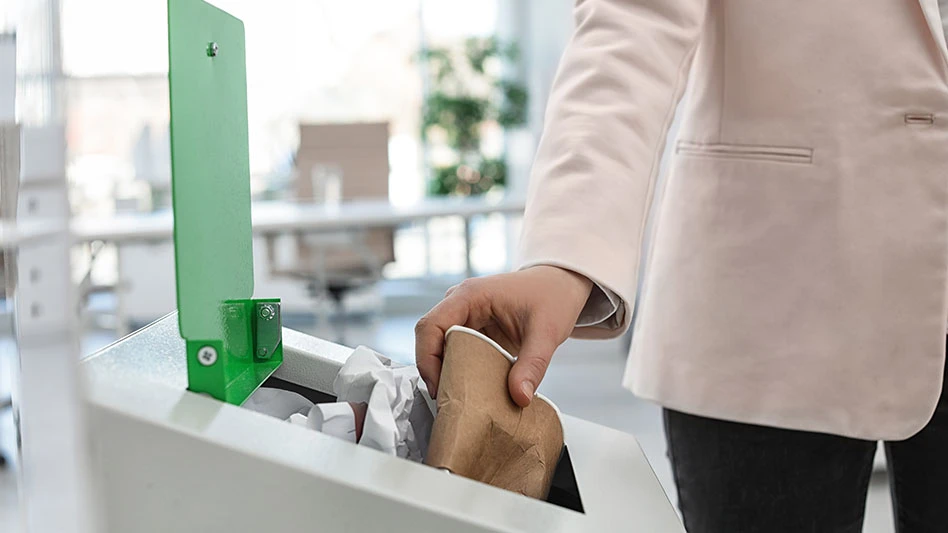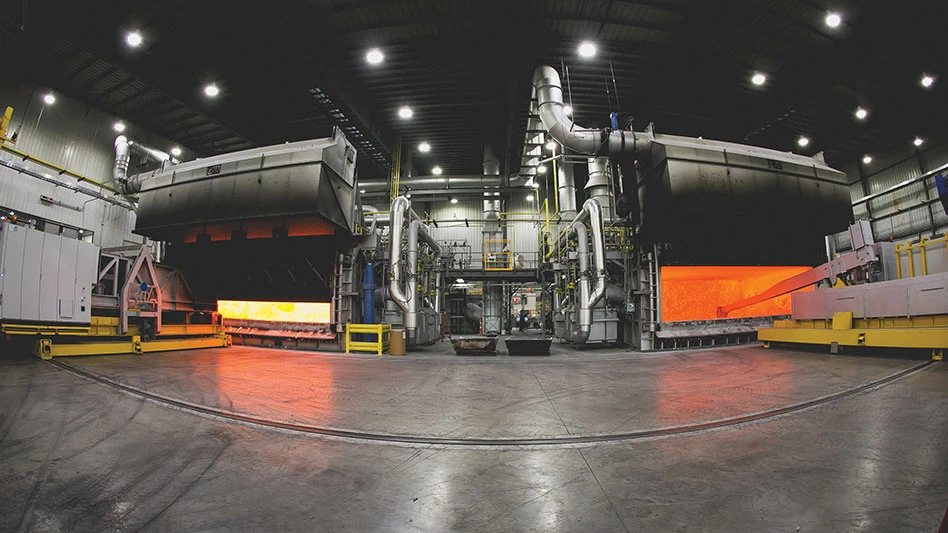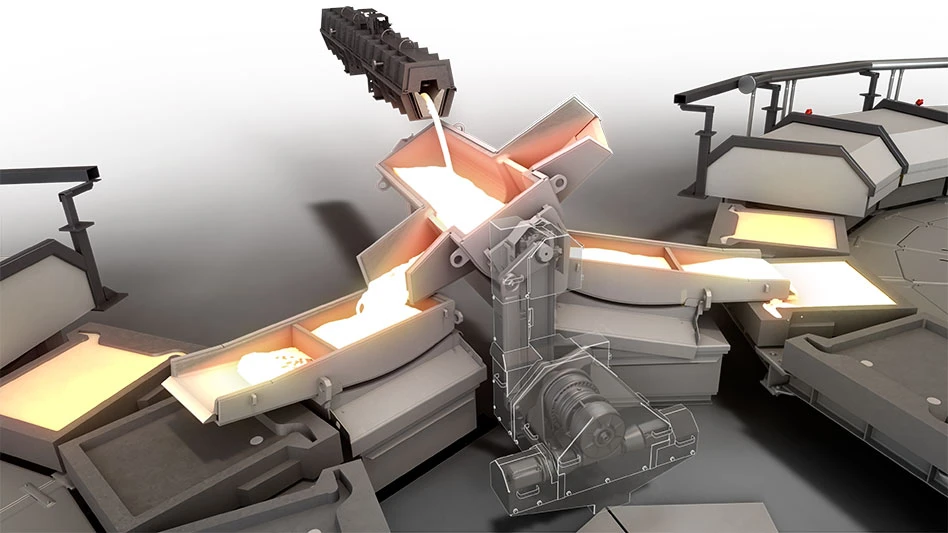Once a secure destruction company has decided to offer in-plant shredding services, whether in combination with on-site services or in lieu of them, it still faces a number of questions.
In determining the most logical and efficient plant set up, secure destruction professionals must consider a number of factors ranging from the type of shredder or shredders they’d like to employ to whether shred size will take precedence over throughput.
Other considerations include how to present material to the shredder and the overall system design. But before they can consider either of these questions, they must first determine the materials they will be processing most frequently.
PROCESSING FLEXIBILITY
Dave Wilson of SSI Shredding Systems Inc., Wilsonville, Ore., suggests that secure destruction professionals begin their in-plant shredder system selection by clearly identifying the markets they want to serve and the needs associated with those markets.
"Clearly identify what you want to process and what level of destruction you want to achieve," he says. "Depending on your requirements, one type of shredding equipment may meet your needs or it may not. No one piece of shredding equipment can do everything, but it may do what you want," Wilson adds.
Len Beusse, chief operating officer of Vecoplan LLC, Archdale, N.C., says to select a shredder that offers the most flexibility in order to shred the entire spectrum of materials that a company intends to process. "This is particularly important if, in addition to paper documents, product destruction opportunities will be pursued," he says.
Also with flexibility in mind, Beusse suggests selecting the largest shredder that a company’s budget allows. "First, study throughput requirements extensively and project future increases. Allow as much over-capacity as your budget allows," he says. "Conduct performance demonstrations at the vendors’ facilities to see for yourself the capabilities of the equipment you are about to purchase."
Tom Wagner, vice president of Systems Design for Allegheny Paper Shredders, Delmont, Pa., stresses the importance of properly sizing shredding equipment to adequately meet the needs of one’s business. "Unlike mobile shredding in which a shredding company can add more shred trucks to increase capacity, in-plant operations generally incorporate just one or two shredding/baling lines," Wagner says. "When purchasing destruction equipment, you should ensure that your equipment won’t be hopelessly undersized when bidding on a large contract."
He adds that the initial overcapacity of a company’s shredding equipment could benefit the business. "Even though your shredding tonnage may be low at the start, you’ll benefit by processing paper faster and freeing up marking time to get accounts," Wagner says.
Nick Wildrick, CEO of Shred First LLC, a secure destruction company based in Spartanburg, S.C., with plants in Georgia, Texas and California, says he and his partner John Bauknight IV have designed their plants with growth in mind. "The important thing is to think into the future," Wildrick says. "In the plants that we build, the shredder that we put in is usually overkill in the beginning, and then we grow into it."
Shred First trains other document destruction company owners and operators through its Shred School program.
"The important thing that we teach people is to begin with how they want their facility to look at the end," Wildrick says. "The ideal system is a pit running through the shredder of their choice into an auto-tie baler," he says. "The most important thing after you get the shredder is to have a pit put in place. That increases productivity by leaps and bounds."
Wildrick recommends that secure destruction professionals plot out the system that they would eventually like to have. Even if they cannot afford the pit and baler at the time they install their shredder, he suggests they position their shredder to allow for these additions in time.
Once a destruction company has determined the focus of its operation, whether it will be paper, X-ray film and microfiche or electronics, Wilson suggests selecting the shredder that best meets the processing needs associated with that material.
"Test shred all the materials you want to process on the equipment you are considering," he says. "Make sure each material processes at an acceptable rate and produces the desired particle size."
Wilson also says to consult with other shredding professionals. "Check with users that are processing your exact application to ensure the system is proven and performs as expected," he says.
CONSIDERING THE SHREDDER
The shredder is the lifeblood of a secure destruction company; therefore, choosing the correct unit is critical to the success of a company. It’s important to keep in mind that all varieties of size reduction equipment offer advantages and drawbacks.
Wilson says to expect some trade-offs when selecting a shredder. "Systems that produce the highest processing rate may not produce an acceptable particle size," he says. "Or systems that produce the desired particle size and rate may not process all the various materials that you want to process."
Wildrick also points out the inverse relationship between smaller shred size and throughput. "A strip shredder will get the greatest throughput but the largest shred size," he says. "A pierce and tear will reduce the shred size, but you will lose a little bit of throughput. With a single-shaft rotary grinder you get a much more consistent shred size, but you lose quite a bit in throughput."
Wagner says, "Grinders produce 2-inch screened particles that, along with two-stage cross-shred systems, produce a more cross-cut-like product gaining in popularity." He adds that grinders are at a capacity disadvantage, and that cross-shred systems require more space but increase capacity.
When a company has decided to handle a variety of materials, Joe Roberto of Shred-Tech Inc., Cambridge, Ontario, suggests working closely with the shredder company. "The shredder should be design-built to accommodate the range of material it will need to handle."
For those companies that have decided to handle a variety of materials, such as paper documents and electronics, Wildrick says the pierce-and-tear shredders can often handle the widest range of materials and still offer good throughput.
However, Roberto says that if space, volume and budget permit, companies would do best to have two shredders specifically designed to shred certain materials.
Wilson agrees. "A shredder suitable for processing all types of electronic components can likely shred paper, but perhaps not at an acceptable particle size," Wilson says. "A typical shredder for electronic scrap is a twin-shaft, pierce-and-shear shredder configured with a 2-inch-wide cutter. This cutter produces an acceptable particle size when shredding electronics but may be too large for a paper shredding application.
"Four-shaft shredder technology uses a screen for particle size control and can be used for shredding both electronic scrap and paper," Wilson continues. "However, four-shaft shredders are more expensive than twin-shafts and may not produce the desired processing rate or a small enough particle size when configured with a small screen."
Beusse suggests examining the advantages and drawbacks associated with each shredder type. "For example, double-shaft shear shredders are flexible in what they can process, but shred size cannot be controlled. Hammermills allow shred size flexibility, but they cannot be fed in batches, nor can they accommodate many types of products secure destruction companies encounter," he says. "Strip-cut shredders are made specifically for paper and light, thin materials, so they cannot process many of the tougher materials destruction companies have to shred. Also, with strip-cut shredders, shred size cannot be altered quickly, and to achieve cross-cut consistency, two shredders must be used," Beusse says.
Once a secure destruction company has determined the type of shredder that best meets the needs of its target market, Wagner says it needs to be certain the baler and feeding system are sized to accommodate the shredder.
He also says that product flow and sufficient space should be considered when selecting a building for one’s operation. Wagner says, "Ask the following questions: Where are the loading docks located? Can I bring the full carts into the staging area easily after weigh-in? Will I need additional room for sorting? Is there adequate storage space for bales?"
Roberto also mentions the importance of considering material flow. "Identify key building features, such as drive-in doors, dock doors and where your conveyor, shredder and baler will fit in the space," he says. "Will you have a pit conveyor and floor scale? Where will you store your bales; inside near the dock, inside trailers or both?"
|
SECURE BY DESIGN |
|
When setting up an in-plant shredding system, Nick Wildrick, CEO of Shred First LLC, Spartanburg, S.C., suggests consulting the National Association for Information Destruction Inc.’s (www.naidonline.org) AAA Certification guidelines. "The tendency is to want to put the drop-off point for the shredder right by the door because at first that makes the most sense," Wildrick says. "But typically that is how you lose a lot of paper out the door." Instead, he suggests allowing for a clear shot from the door to where the paper will be dumped. "You want it so that it won’t get caught in drafts." Wildrick says that Shred First uses screens to safeguard against paper loss when doors are left open. He also recommends using a pit conveyor to feed a shredder because it further safeguards documents and prevents them from being caught in a draft and being blown away. |
Once a confidential shredding company has a basic idea of how it would like its processing system laid out in its building, equipment companies will be able to provide scale drawings.
GOING AUTOMATED
To achieve optimum efficiency, Wildrick recommends using as much automation as possible.
Beusse agrees, suggesting that secure destruction professionals "consider the most efficient, automated and ergonomically viable equipment layout that your facility allows." He adds, "Focus particularly on how material will be unloaded prior to shredding, how it will be introduced into the shredder, any sorting capabilities needed and how it will be loaded out into bales. Go with the most automated, but straightforward, layout possible that reduces labor, reduces processing time and helps you become as competitive as possible."
Wildrick says he and Bauknight chose a 30 hp shredder eight years ago when they began Shred First. "Manually feeding paper through a machine like that is incredibly labor intensive, and you can make the payment on a [larger] piece of equipment with the reduced labor."
Wagner says the most efficient way to feed a strip-cut shredder is by using an automated in-feed conveyor. "Strip-cut shredders can process high volumes of paper, but the material needs to be metered. A comprehensive in-feed conveyor…can be bulk loaded by a tipper or skid loader and will separate and thin paper in a manner easily handled by the shredder," he says.
"Shredder throughput can be affected by the method in which the material is introduced," Shred-Tech’s Roberto says, adding that the shredder and material will dictate the preferred method. "Most shredders will work better with a metered feeding system, however, gravity feeding into a bulk hopper is very common and effective."
Single-rotor shredders can be batch fed, though they are best fed with a conveyor, Wilson says. "Single-rotor shredders are not suitable for processing heavier metal and non-shreddable materials," he says. "Conveyor feeding provides some ability to visually inspect the material prior to shredding. Automated metal detection and removal systems should also be considered, especially with single-rotor shredders."
Of course, once a shredding system is in place, maintenance becomes crucial in ensuring trouble-free operation.
MAINTAINING A SYSTEM
"Selecting the right system for your application is your best assurance of low maintenance," Wilson says. "Maintenance consists of cutter replacement, general lubrication or moving components and general cleaning around all the equipment, including conveyors."
Wilson says cutter cost and downtime associated with cutter changes are the most important areas to evaluate. "Check with experienced users of the equipment you are considering for the best information on the cost of operating and maintaining the equipment."
Roberto says maintenance should be ongoing. "The operator should be inspecting the equipment daily to observe changes in operating characteristics." He also suggests regular monitoring of the system’s throughput, as a drop in production could indicate worn cutting chamber components.
Beusse suggests developing a routine maintenance program for one’s shredder and selecting a dedicated person or staff members for the task. "An investment in this aspect of operating a shredding system will yield returns most people don’t believe until they do it,." he says. "The shredding system is the core and heart of your business. Give it the attention it deserves, and it can serve you for many, many years."
The author is managing editor of SDB magazine and can be e-mailed at dtoto@gie.net.

Explore the February 2005 Issue
Check out more from this issue and find your next story to read.
Latest from Recycling Today
- Fenix Parts acquires Assured Auto Parts
- PTR appoints new VP of independent hauler sales
- Updated: Grede to close Alabama foundry
- Leadpoint VP of recycling retires
- Study looks at potential impact of chemical recycling on global plastic pollution
- Foreign Pollution Fee Act addresses unfair trade practices of nonmarket economies
- GFL opens new MRF in Edmonton, Alberta
- MTM Critical Metals secures supply agreement with Dynamic Lifecycle Innovations






